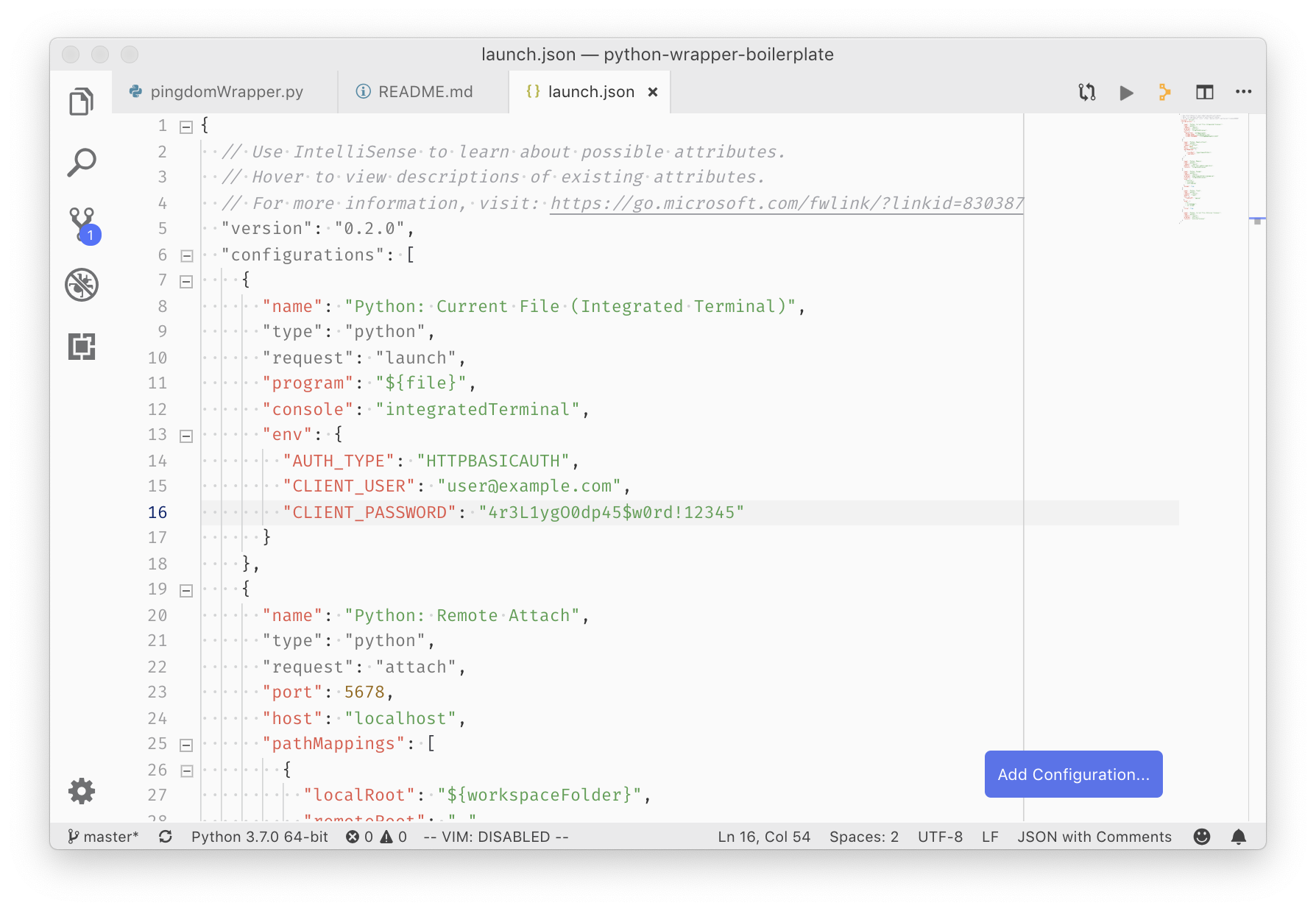Python Client Boilerplate
This project's aim is to facilitate the consumption of APIs that do not have a provided Python SDK (or a poorly written Python SDK).
Many services out ther provide great SDKs with much more tailored features than could be provided generally. However, there are others that either provide just an API endpoint, with no SDKs, or only a small subset of SDKs, limited to the languages they are using internally.
After stumbling across several of these services, and after failing to find a clear and simple example or generator for Python API wrappers, I decided to publish this, which is a simple bare-bones API client that implements extensive logging for debugging and other best practices I've found along the way.
Notable mention to Tapioca, which is a better place to start if you want a much more fully fledged API client, but which provides less visibility and customizability into the core.
Code Flow
Everything starts with the Client class. The Client class will handle establishing the session that will be used across all successive requests as well as the authentication used.
One of the main design decisions here was to pass every single request through an internal _make_request function on the Client, which also handles logging the request and response, handling response status codes, and parsing the response.
From the get-go, you will always be able to use the public make_request function which requires you to specify the endpoint, and optionally, the method, query params, or a body.
However, the real value from having an API client comes from implementing all the other functions to pass in native Python objects (like a list of tags or a datetime object) and have it converted to the correct format accepted by the API (like a comma-delimited string, or seconds since the epoch). Since this is so specific to the API, this will need to be done manually, but the make_request function will give you the foundation for communications until you implement API-specific functions.
By default, all responses will parsed as JSON, and will default to text if not valid JSON.
System Requirements
All of these must be available in your PATH. To verify things are set up properly, you can run this:
git --version
python3 --version # it's possible your python3 binary is python
pip3 --version # it's also possible your pip3 binary is pipIf you have trouble with any of these, learn more about the PATH environment variables and how to fix it here for windows or mac/linux.
Setup
First, clone the repo:
git clone <this repo>
cd <repo name>Python is a little divided on how to manage environments. If you know what you're doing, feel free to use whatever you prefer (pipenv, venv, global pip, etc.).
Otherwise, run these commands:
virtualenv venv
source venv/bin/activate #or venv/bin/activate.fish
pip3 install -r requirements.txtHow to use it
This is just a boilerplate client. At the very minimum, here are the steps required for creating a functional Python client:
- In exampleClient.py, change the URL near the top to match the API you are calling
- Set environment variables in whatever context will be running your code for authentication (Basic auth is most common). This could be VS Code, any other IDE, a terminal emulator, or on a hosting provider's site.
Example shell:
export AUTH_TYPE='HTTPBASICAUTH'
export CLIENT_USER='user@example.com'
export CLIENT_PASSWORD='4r3L1ygO0dp45$w0rd!12345'Example VSCode:
Simple Test
For a trivial test just to validate the client is working as expected, you can just add in a test case in the if __name__ == "__main__": section at the bottom.
Any code included here will run ONLY if the exampleClient.py file is run directly.
It can also be helpful to set the environment variable DEBUG=1 to get debugging output from the HTTP requests.
if __name == "__main__":
client = Example()
users = client.make_request('/api/v1/users')
logger.info(users)Using the client as a module
Most of the time, you'll have a program that is using this client for just calling the API and you'll have other logic held somewhere else.
Assuming this exampleClient.py file is in the same directory as your consuming code, you can use the following:
import Example from exampleClient
client = Example() # instantiates a client object - uses environment variables for auth if present
resources = client.make_request('/api/v1/resources') # will send a GET request to the resources endpoint
users = client.get_users() #
john = client.get_user(id="12") # returns the user object for JohnRoadmap
Things I'd like to include:
- Make Python2/3 compatible
- Generate a client from the boilerplate given an OpenAPI url
- HTTP_Method class in place of Strings
- Handle responses other than JSON more elegantly
- Handle rate limiting
- Handle retries on
5XXstatus codes - Implement a better non-environment-variable based configuration management system
- Create a
setup.py
Common Issues
If you are not using a virtual environment of any sort, the default shebang command (/usr/bin/env python) might default to python2.
You can change this to the absolute path of your python binary or update it to explicitly call out /usr/bin/env python3.
